
About Andrew Cusack
 Writer, web designer, etc.; born in New York; educated in Argentina, Scotland, and South Africa; now based in London.
Writer, web designer, etc.; born in New York; educated in Argentina, Scotland, and South Africa; now based in London. read more
News
Blogs
Reviews & Periodicals
Arts & Design
World
France
Mitteleuropa
Knickerbockers
Argentina
The Levant
Africa
Cape of Good Hope
Netherlands
Scandinavia
Québec
India
Muscovy
Germany
Academica
Old Master & 19th Century at Christie’s
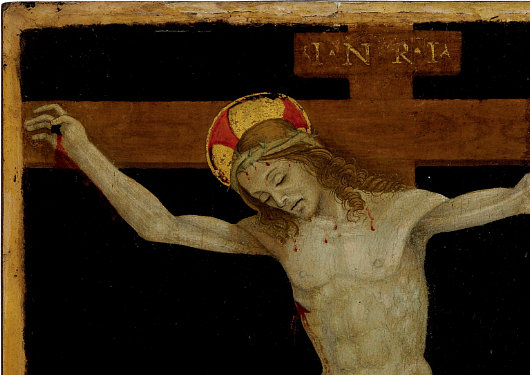
Being something of an auction-house dilettante — I last brought you a virtual update from the Dublin bidding chambers — there are a number of works up for grabs in tomorrow’s Old Master & 19th Century Paintings, Drawings, and Watercolors auction at Christie’s here in New York that caught my eye. A few other items sold in recent auctions follow at the bottom.
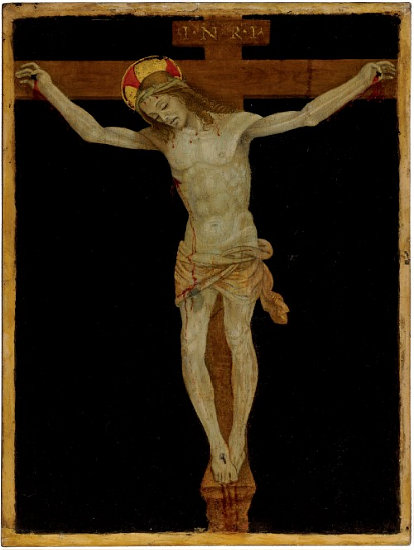
Filippino Lippi, Christ on the Cross
Oil and gold on panel, 12¼ x 9¼ in.
Estimate: $60,000 – $80,000
This is one of three of Filippino Lippi’s versions of this composition, and the best of the three at that. (The other two are in a private English collection and the Yale University Art Museum, respectively). This painting had belonged to Count Alessandro Contini-Bonacossi, the art collector, politician, and financial advisor to Mussolini. Upon the Count’s death it was sold to Senator & Mrs. Simon Guggenheim and gifted to the Denver Art Museum in 1955. (It is being sold to benefit the D.A.M.’s acquisitions fund). The figure of Christ here is repeated from the central panel of Lippi’s Valori altarpiece which ended up in Berlin’s Kaiser-Friedrich Museum and was destroyed in an air raid.
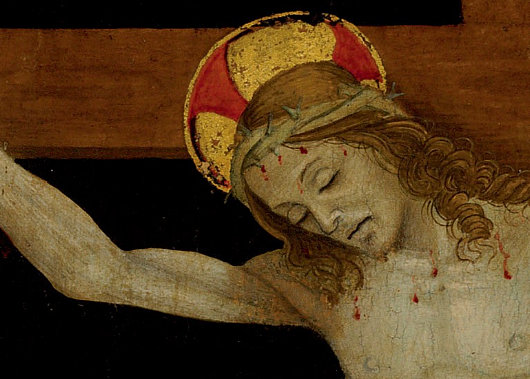
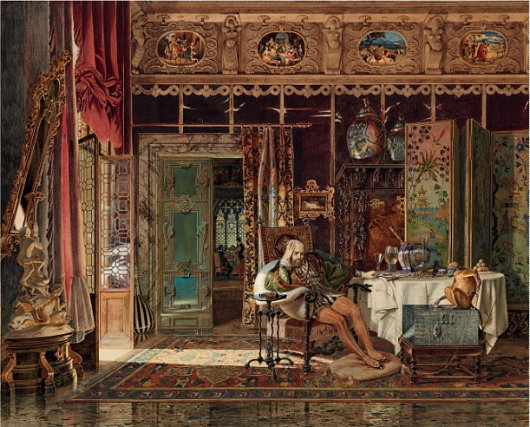
Carl Friedrich Heinrich Werner, A troubadour brooding in an elaborate interior
Pencil, watercolor, bodycolor and gum Arabic, 23 5/8 x 29¼ in.
Estimate: $10,000 – $15,000 (as pair with below)
Oh those brooding troubadours and their chained monkeys! The artist studied under Julius Schnorr von Carolsfeld, one of the first to follow the original Nazarenes to Rome. Werner travelled extensively throughout the Levant and North Africa, and was one of the first non-Muslims allowed to paint the interior of the Dome of the Rock on the Temple Mount in Jerusalem. Being a fan of architecture and design (and pet monkeys), these two interiors by Werner caught my eye.
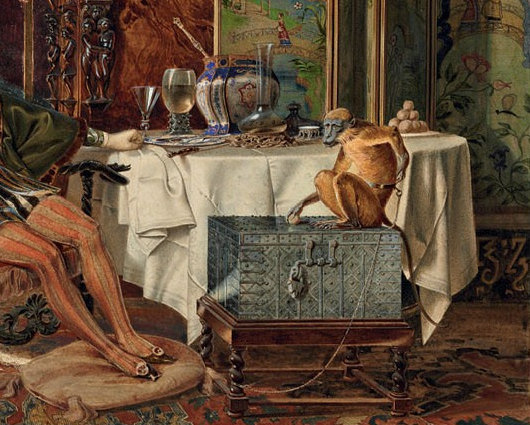
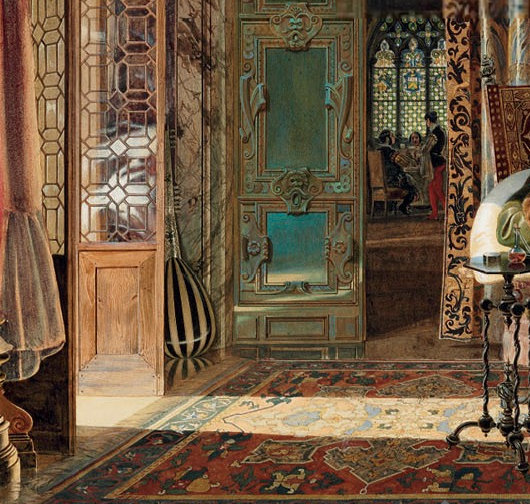
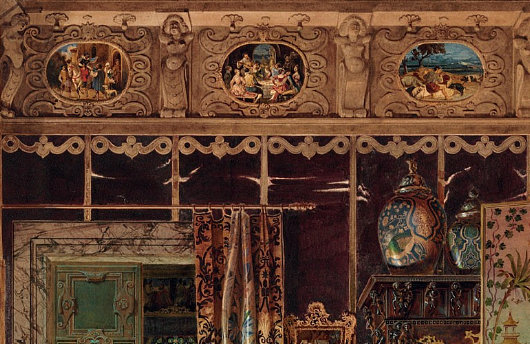
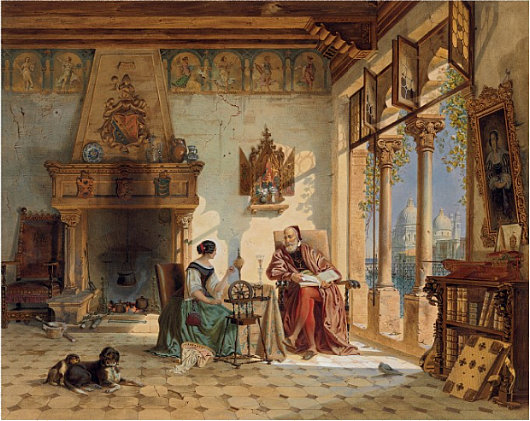
Carl Friedrich Heinrich Werner, A priest and a woman spinning yarn in a Venetian interior
Pencil, watercolor, bodycolor and gum Arabic, 23 5/8 x 29¼ in.
Estimate: $10,000 – $15,000 (as pair with above)
The clergymen of today are likely grateful that fashion no longer calls for them to wear leggings. (I did, however, once spy a be-gaiter’d cleric at a ball in Edinburgh).
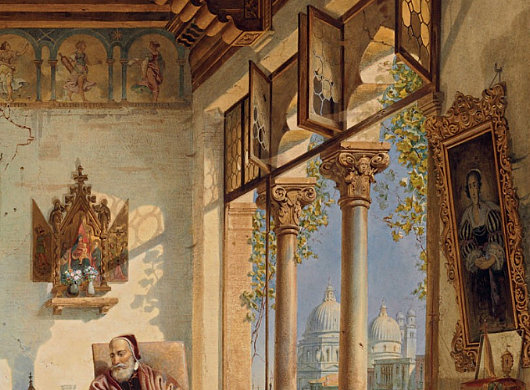
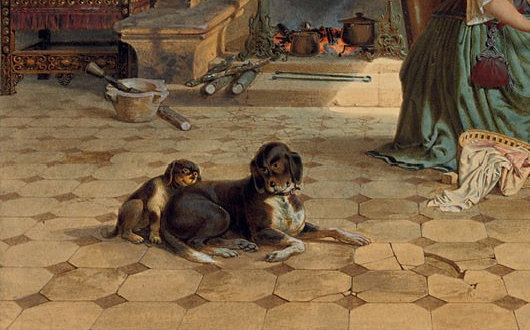
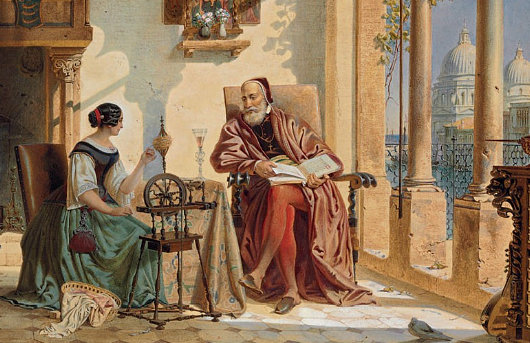
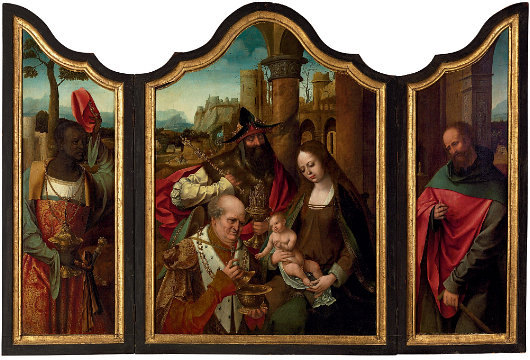
The Master of the Antwerp Adoration, Adoration of the Magi Triptych
Oil on panel, central panel: 42½ x 30 in., wings: 41½ x 13¼ in.
Estimate: $800,000 – $1,200,000
Max J. Friedländer, the German art historian & privy counsellor, defined five anonymous artists (later expanded to nine) who produced the most prominent works from early sixteenth-century Antwerp. This adoration triptych was earlier attributed to the Master of the von Groote Adoration but reattributed more recently. (A dearth of evidence suggests Friedländer himself never saw this painting, but he admitted to often confusing the works of the von Groote and the Antwerp masters). The triptych is a superb example of Antwerp Mannerism, and the subject matter is the single most popular subject for triptychs produced in Antwerp at the time. Prof. Dan Ewing has argued that the Magi, as travellers bearing fabulous riches, held a particular resonance for the rich merchant traders of Antwerp.
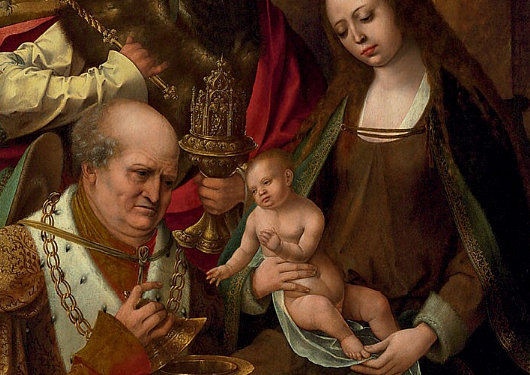
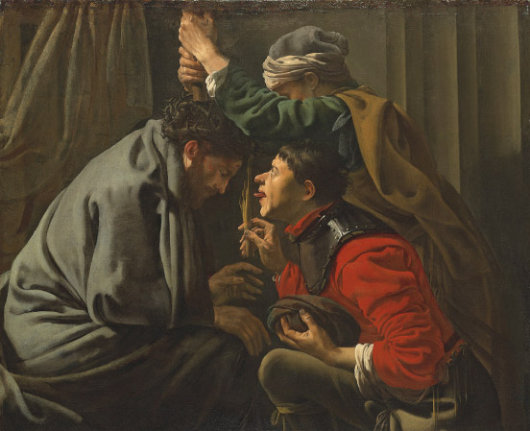
Hendrick Jansz. ter Brugghen, The Mocking of Christ
Oil canvas, 43¼ x 52¾ in.
Estimate: $800,000 – $1,200,000
I’ve been a fan of ter Brugghen — head honcho among the Utrecht Caravaggisti — as long as I’ve known about him, which I’m ashamed to say has not been more than a few years. As I’m by no means the first to point out, his synthesis of a Caravaggist understanding of light and shadow with the older German iconography influenced by Dürer produced a flowing, orderly Dutch brilliance. Unfortunately, we can’t see his Mocking of Christ as brilliantly as it once was. Conservation work in 1988 uncovered traces of particularly unstable blue and red pigments in Christ’s cloak. The two combined would have produced a striking purple at the time ter Brugghen painted the work, but they have since faded to the colour we see today.
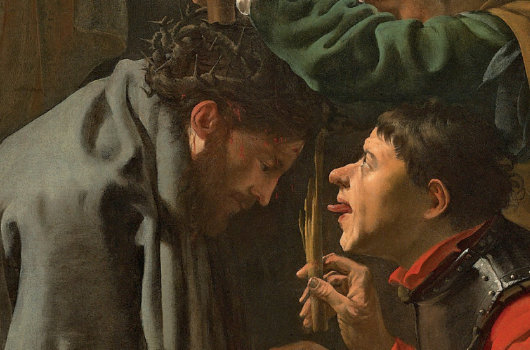
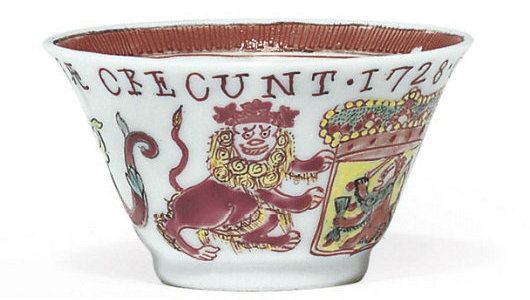
A V.O.C. armorial teabowl
Porcelein, 1½ in. high
c. 1730; Estimate: $1,000 – $1,500, realized $5,000
(Sold 26 January 2010, New York)
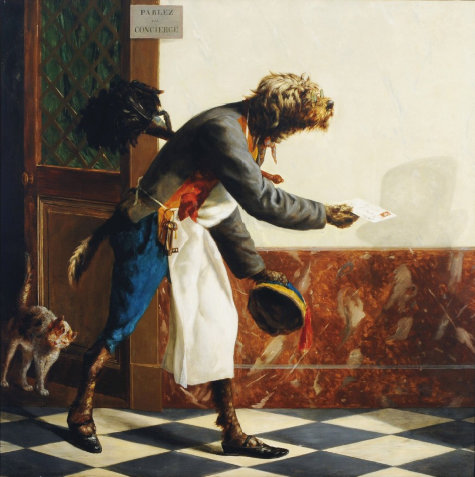
Circle of Louis Robert Heyrault, The Canine Concierge
Oil on canvas, 59¼ x 59¼ in.
c. 1850-1880; Estimate: $8,000 – $12,000, realized $11,875
(Sold 16 December 2009, New York)
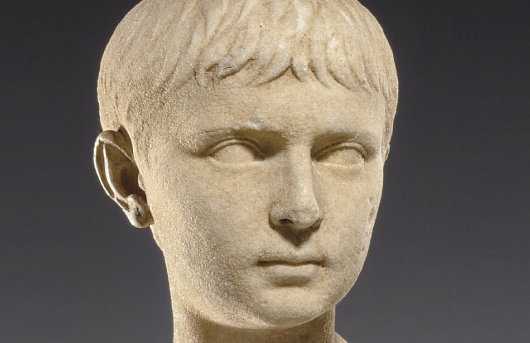
Roman bust of a Julio-Claudian prince
Marble, 13 3/8 in. high
c. 1st half of the 1st century A.D.; Estimate: $80,000 – $120,000, realized $722,500
(Sold 11 December 2009, New York)
Search
Instagram: @andcusack
Click here for my Instagram photos.Most Recent Posts
- Burns Tower April 19, 2024
- Patrick in Parliament March 18, 2024
- Articles of Note: 13 March 2024 March 13, 2024
- Cambridge March 9, 2024
- Taken on Trust March 4, 2024
Most Recent Comments
Book Wishlist
Monthly Archives
Categories



Dear Mr. Cusack: Do you have any idea why the Lippo Lippi item was estimated so low? Is it some tiny thing? Is there a ton of Lippi’s stuff on the market? Do you whether and for how much it sold? Thanks. SP
Why describing as “a priest”the man sitting with a book on his knees in the picture by Werner? It’s extravagant saying so. He is an old gentleman reading, that’s all.